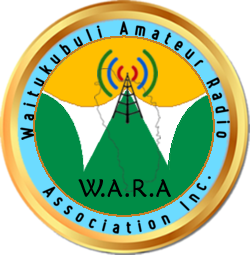Simulated Emergency Test (SET)
The annual Simulated Emergency Test (SET) is a training exercise involving the Waitukubuli Amateur Association Inc. (WARA) and other invited participants. Its primary purposes are to evaluate strengths and weaknesses in emergency communications and to demonstrate amateur radio to the public.
On the Saturday of the last full weekend in the month of June every year in Dominica, a nationwide radio communications network is set up that links every major town and village and most of the geography of Dominica. Every mode of radio communications is utilized including analog, digital, voice, data, simplex and duplex. For no more than 6 continuous hours, this nationwide radio communications network is exercised with a primary objective of proving the system’s readiness and capabilities. Then as quickly as it was setup, the system is dismantled and stored in preparation for when it is needed.
SET 2020
Scenario
WARA SET 2020 will be held on Saturday June 27, 2020 between 10:00am and 2:00pm local (14:00 and 18:00 UTC).
The scenario for SET 2020 will be a major hurricane with sustained winds of 130 to 156 MPH (a category 4 on the Saffir-Simpson Scale) affecting the island.
There is heavy damage to the entire island. All land-line, cellular and Internet service have been disrupted. Most utility poles have been blown down and electrical power is out. Water pipes are also damaged. Most roads are impassable due to debris and landslides. Most homes have been damaged; many have been destroyed.
Objectives
- Test the readiness of WARA members to respond to a communication emergency
- Identify weak spots in WARA’s emergency communications network
- Test the ability of WARA members to use multiple means of communication to effectively pass emergency messages from one point to another
- Prepare WARA members for operating in real world emergency communication scenarios.
- Update WARA’s emergency Communications Plan.
- Develop a radio and repeater coverage map and assess the association’s communication range.
- Assess the ability of radio amateurs throughout the island to respond quickly to a catastrophic event.
- Develop skills to send clear, concise, comprehensive messages,
- Encourage the effective use of digital communications, specifically Winlink and FLDigi,
- Test skills in use of simplex communications,
- Encourage the effective use of communications equipment and methods of operations,
- Confirm our ability to operate entirely off the electrical grid by using batteries, solar panels, generators, etc
- Provide a positive environment to learn best practices while having fun.
Operations
The WARA Emergency Net will be activated by the Net Control Station (NCS), upon instructions from the Officer in Charge (OIC). For this SET, the OIC, or designee, will transmit on any of WARA’s repeater or monitoring frequencies, advising all stations of the emergency activation. Internet e-mail, cell phone messaging, social media or other normal means of communication may also be used if available.
Based upon the facts, stations will be fully advised as to the nature of the emergency. Net Control will establish and announce backup frequencies and a backup Net Control station. As appropriate, Net Control will periodically announce that a net is in progress, give brief summaries, and remind users of backup frequencies and backup Net Control, etc.
WARA members should monitor the primary net frequency of (444.700) (+) (103.5) for activity. Backup frequencies are:
VOICE VHF /UHF
430.100 simplex 103.5 tone Mt. Espagnol cross band repeater (Portsmouth)
447.725 simplex 103.5 tone Mt. Canot cross band repeater (Bellevue Chopin)
WINLINK RMS PACKET NODES
J73WA-10 on 145.050 MHz
ECHOLINK REPEATERS
J73W-R
LOCAL HF CONTACT FREQUENCIES
Day-time – 7.171MHz Times 7:00am – 6:00pm
Night-time – 3.800 MHz 6:00pm – 7:00am
REGIONAL HF CONTACT FREQUENCIES
Caribbean Emergency & Weather Net 3.815 6:30 AM and PM
Stations will be checked in from their home stations, mobiles, and portable stations. After they check in, all stations shall stand-by on an assigned frequency for further instructions. An inventory list will be made of operators and their equipment for possible assignment.
The NCS shall acknowledge stations checking in. Once a station is signed in, it will need permission from the NCS to leave the net or stand down.

